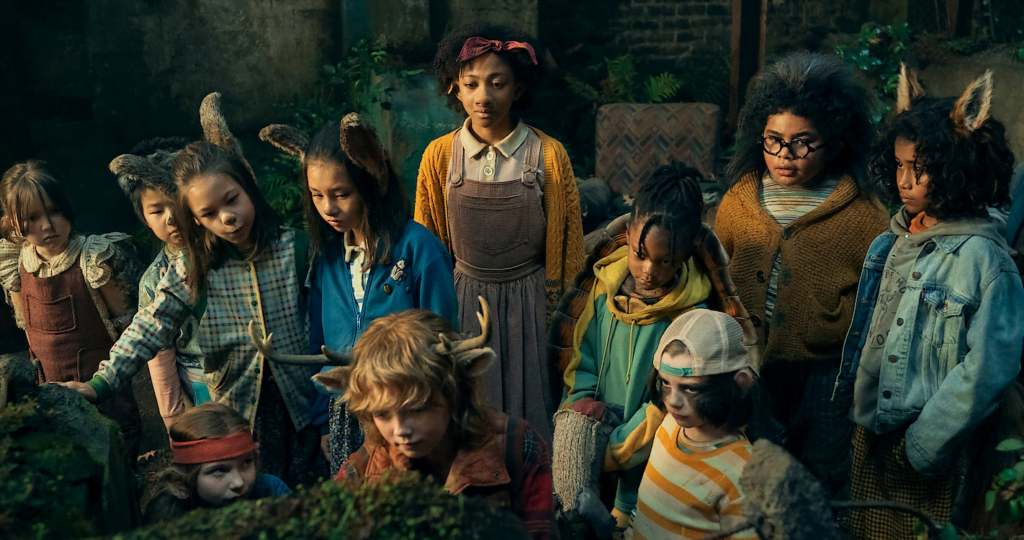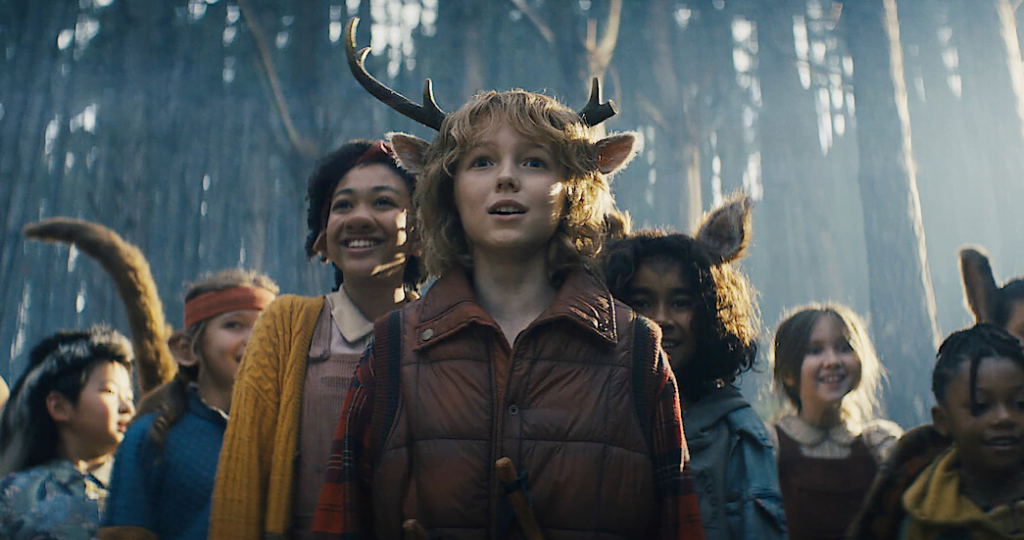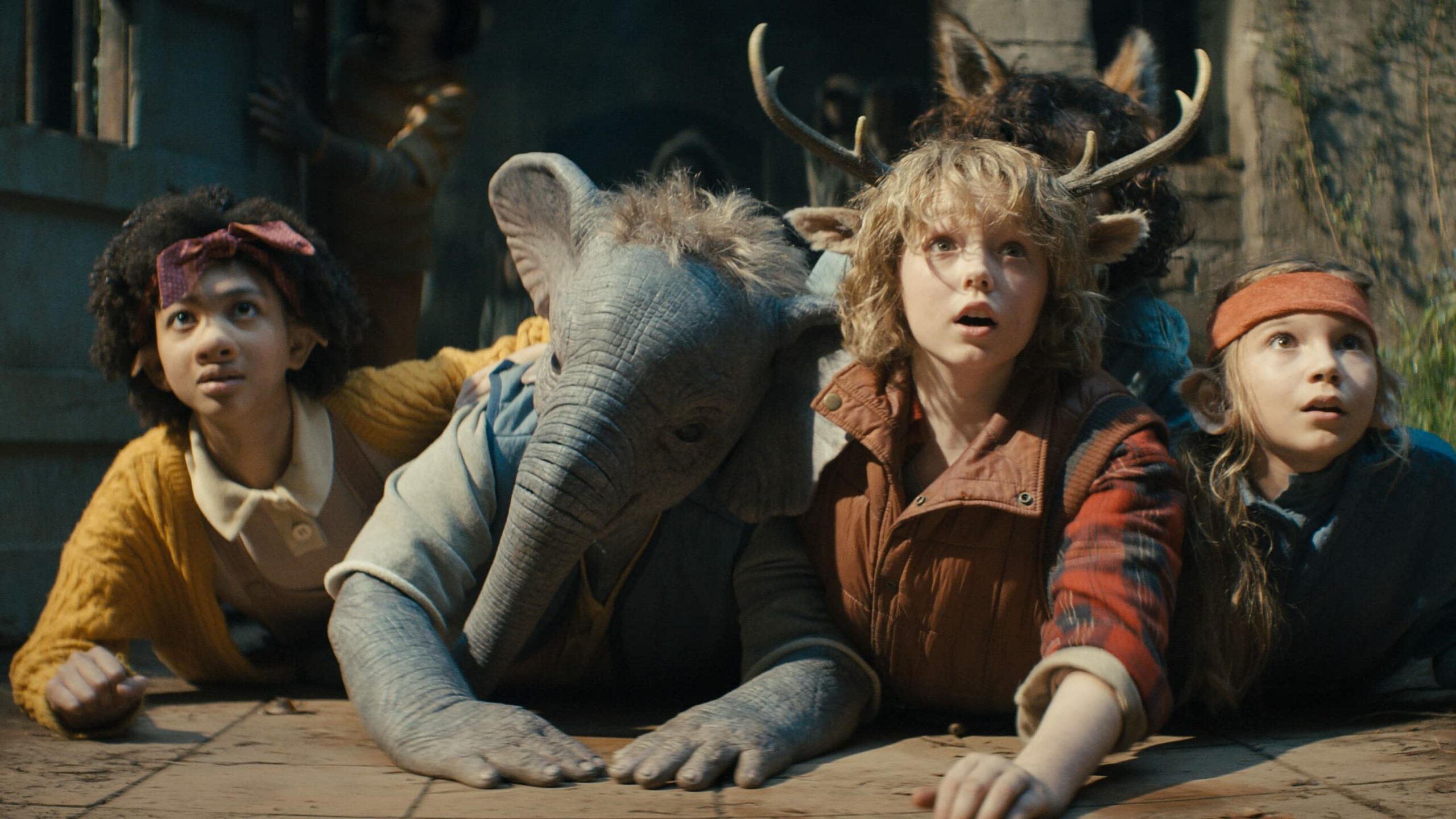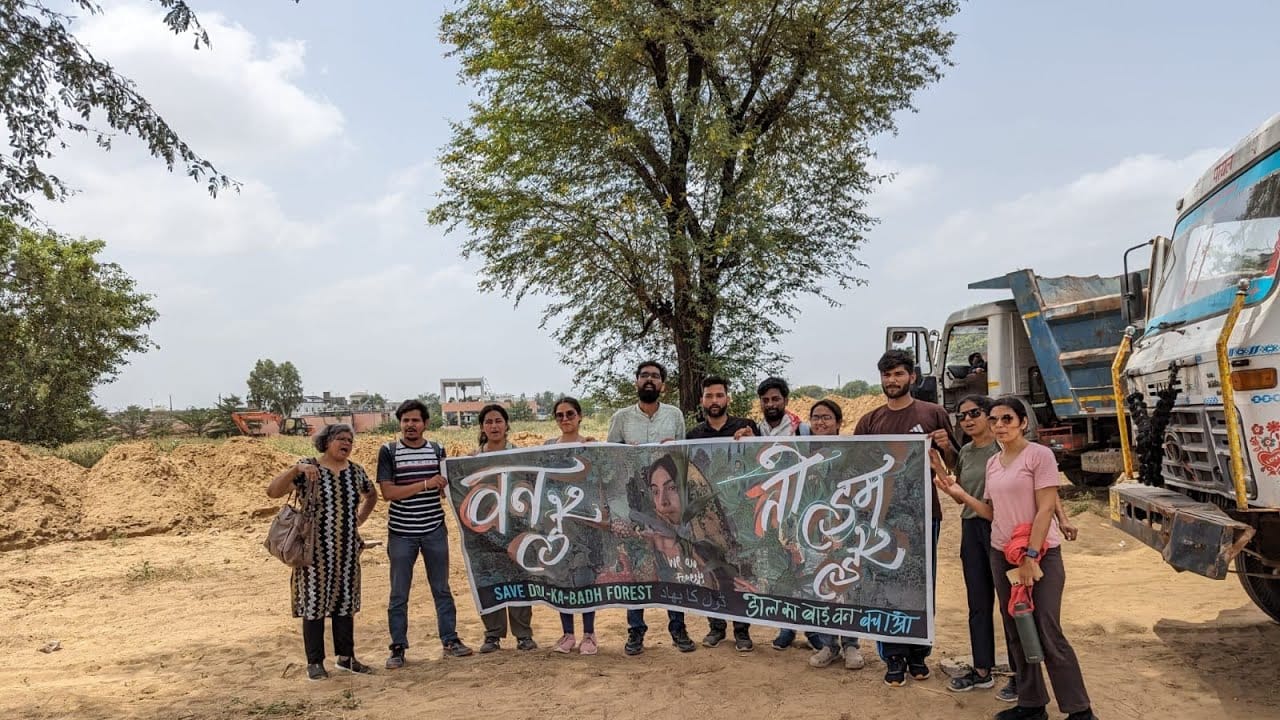A little more than a year into the pandemic Netflix released Sweet Tooth, a post-apocalyptic adventure. Its plot was eerily similar to the situation the world was in, a virus had ravaged the human population. It was hard to believe that the coronavirus had not inspired the makers. Instead, it was adapted by Jim Mickle, from a comic book series of the same name created by Jeff Lemire.
Released on the eve of ‘World Environment Day,’ the series plays out as an unequivocal warning about the climate crisis. The narrative begins with “the Great Crumble,”—the event that heralds the apocalyptic virus which causes “the Sick,”—wiping out 98 per cent of humanity in its very first wave. The remnants of human civilization are left to reckon with the birth of “hybrid babies,”—part human, part animal—who are somehow correlated with the virus.
We now know pandemics are a very real possibility in a world that indiscriminately razes down wildlife habitats in favour of unsustainable urbanisation. However, climate change has proven hard to grapple with as a collective. The mention of it either elicits denial or anxiety. It is here that the eponymous character of “Sweet Tooth,” (Christian Convery) turns out to be a genius narrative choice.
Animal babies—a fusion of the two cutest things winning the internet—become an entry point to talk about larger issues. Gus, aka “Sweet Tooth,” is a ten-year-old hybrid, more specifically, a “deer boy.” This is how the horrific elements of a dystopian post-apocalyptic world are organically balanced out with the innocent joie de vivre with which Gus views the world.

Gus, who grew up in the scenic lap of Yellowstone National Park, has a faint idea of the terrors that await him outside the park’s fence. As his sole guardian “Pubba,” (Will Forte), who sequestered him for the first decade of his life passes away, he moves out in search of his mother, Birdie (Amy Seimetz). On his odyssey, he comes across a mixture of characters, who belie the makers’ nuanced vision.
Sweet Tooth often feels like an allegorical fable about the world we live in, and where it could be heading. As the plot progresses we find several parallels in it with our present-day world. We are introduced to the “Last Men,” remnants of the old world military who have reorganised themselves under a certain General Abbot (Neil Sandilands).
For the Last Men more than saving human lives, winning matters. General Abbot has a huge appetite for being the hero that saved mankind from extinction. In their very name, “the Last Men,” is a clear reference to the last stand of the hetero-patriarchal capitalist order; a kind for whom nothing but “profits,” matter.
As a foil to them, stand “the Animal Army,” which is a guerrilla-like militia of teenagers, headed by Bear (Stefania LaVie Owen). They acknowledge “the losses,” of their generation, but do not harbour the delusions of the Last Men. Taking their names from different animals, this Army strives to correct the planet’s ecological balance. To that end, they are fighting to defend the hybrids. The hybrids bring hope to the Animal Army that the planet is healing. Their passion and indomitable spirit brings to mind the likes of Greta Thunberg, and many other young climate activists like her.

Sweet Tooth is nothing like the “disaster films,” (think The Day After Tomorrow) we were fed in the nineties or 2000s. The diversity of its cast reminds is a refreshing change from the white cis het male hero who comes in to save the day. The multi-stranded narrative has complex characters, all of whom exist in a grey space trying to find their own ways to cope with the fallout of “the great Crumble.”
“Big Man,” (Nonso Anozie) who steps in as Gus’ reluctant caretaker is not invincible and comes with a chequered past. Dr. Singh (Adeel Akhtar) who uses questionable means to find a cure for the Sick, is deeply conflicted as his wife, Rani’s (Aliza Vellani) life hangs in the balance. Even the tyrannical General Abbot is made human with his history of having grown up in an abusive home.
The series goes on to upturn the stereotypical vision of a post-apocalyptic world that is enveloped with a greyish gloom of desolation. Here, the apocalypse is only limited to humans. In the decade since “the great Crumble,” the planet is shown to be reviving itself with a quiet tenacity. The makers delineate Nature’s resilience with vistas of isolated urban spaces overtaken by lush green foliage, while herds of wild animals stampede through the empty streets.
These are familiar scenes which take one back to the first months of the Covid lockdown. There were multiple reports globally of the air clearing up and animals reclaiming empty roads and canals alike. It’s a timely reminder of how quickly the planet could recover if this consumerist machinery of production, consumption and waste creation could come to a halt.

The most poetic evidence of Nature’s ability to adapt is depicted through the wild violet flowers that grow to mark places the virus has touched. The flowers become a visual metaphor for Nature acknowledging the loss of humankind but moving on to build newer forms of life.
Speaking of building anew this is where the hybrids come in. As Birdie, the scientist responsible for creating both the virus and Gus, says, ‘They were two sides of the same coin.’ The hybrids are born out of Nature’s need for an ecological equilibrium. They replace humans and don’t consume and create waste like their predecessors.
The harmonious link between the hybrid children and their natural environment seems to have been derived from the indigenous wisdom of the sustainable lifestyles of the tribal communities in our modern world, whose lands are under the continuous threat of big corporations. Similarly, the hybrids are constantly under threat from the remaining vestiges of the human race.
Besides being a clear emblem of a sustainable future, the hybrids also lend themselves easily to a queer reading. The very concept of hybridity speaks of something that is not quite natural. This “unnatural-ness,” is something that queerphobia often associates with queer realities. The “hybrids,” exist outside the mainstream social order, denying to conform to the straitjacket of binaries, just like queer people. To the Last Men, the hybrid children are simply vermin. The hybrid children are hunted, caged and if not outright eliminated, experimented on.
There is a scene where Big Man disguises Gus as a “human,” child and asks him to act normal. That is a situation every queer person has had to live through at some point in their lives, trying to pass off as cis. The “Preserve,”—a zoo turned sanctuary by a former therapist, Aimee Eden (Dania Ramirez)—is the only safe haven where a “hybrid child,” can just be a child and live freely. Until the Last Men turn that sanctuary back into a zoo, treating the children like chattel, feeding them dog food. It is reminiscent of the detention centres on the American Mexican border where immigrant children are separated from their parents, and often die due to negligence.
One of the biggest achievements of the series is its deft portrayal of what fear-mongering can lead to. The fate of the hybrid children acts as a cautionary tale. The images of cute furry animal children being persecuted in the name of saving humanity is a poignant wake-up call. Through the heartbreaking analogy of the “hybrid kids,” the series highlights how the anxiety of an imminent climate crisis can be leveraged, making marginalised people even more vulnerable.

As the climate crisis rapidly unfolds it can lead to a shortage of resources, frequent natural disasters, droughts, Etc. All of these factors can further magnify social, financial, and health inequities already present in our world. It is going to be twice as difficult for the already marginalised queer community to access social, financial and medico-legal benefits as climate change keeps accelerating. Existing prejudices against the queer community will only complicate matters. This queerphobia manifests itself when bigots say things like queer people are responsible for causing cyclones.
Sweet Tooth is memorable ultimately because of the leitmotif of resilience it embraces. Although it does not mince its words about the self-destructive route humanity is set on, it keeps reminding us how there is still time to course correct. Instead of adopting the jaded cynicism of most dystopian narratives, Sweet Tooth transforms itself into a life-affirming adventure about finding one’s community. Within the Preserve, the hybrid children are easy with their respective differences, they become each other’s chosen family. It is an inclusive space where since not all of them speak, sign language is used. The Preserve then becomes synonymous with a queer affirmative disabled-friendly utopia.
In repeatedly underlining that the hybrid children are “how the Earth survives,” Jim Mickle openly advocates for alternate ways of living. The series seems to have deliberately interwoven the philosophy of the “degrowth movement,“—which calls for a shift from a growth-based economy to a care-based economy—into its narrative. Although a post-apocalyptic world, Sweet Tooth offers us a hopeful vision of how verdant our planet would feel if we made the collective shift to sustainable living.





